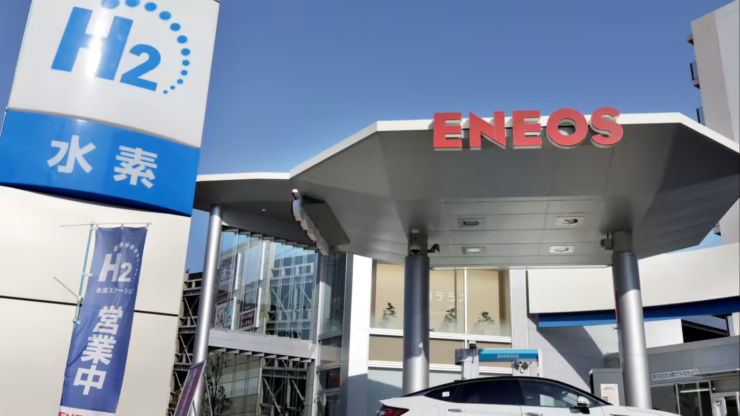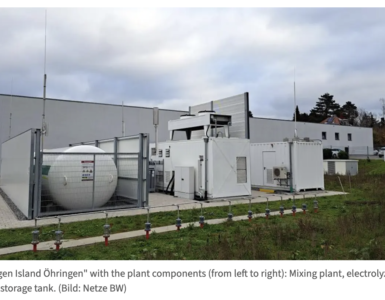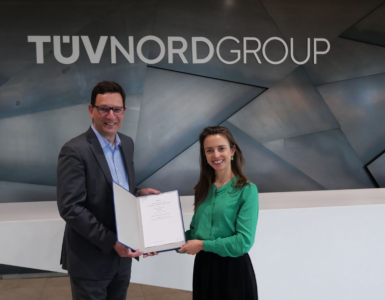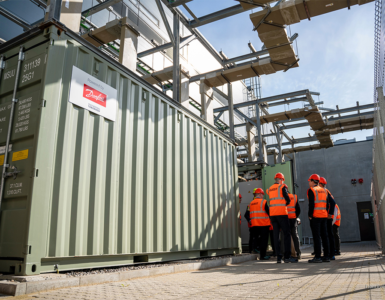Japan – Eneos draws closer to shipping hydrogen via oil tankers.
Japanese energy company Eneos said it will soon test technology that allows hydrogen to be shipped by regular oil tankers at ambient temperature, an innovation expected to drastically cut the cost of adopting the alternative energy source.
Eneos has built a demonstration plant in Brisbane, Australia that makes methylcyclohexane (MCH), a liquid hydrogen carrier. The facility will go into operation in February.
MCH is typically produced by taking hydrogen stored in tanks and reacting it with toluene — an organic chemical compound — using synthesizing equipment. Eneos is developing an electrolyzer that turns water and toluene into MCH in one step.
🔥 What about we co-host a webinar? Let's educate, captivate, and convert the hydrogen economy!
Hydrogen Central is the global go-to online magazine for the hydrogen economy, we can help you host impactful webinars that become a global reference on your topic and are an evergreen source of leads. Click here to request more details
Through Eneos’ pioneering process, there is no need for hydrogen tanks or extra synthesizing equipment, sharply reducing costs. Hydrogen would be extracted from the MCH once it arrives at its final destination.
On its own, hydrogen must be stored at minus 253 degrees Celsius for it to remain liquefied.
The electrolyzer at Eneos’ demonstration plant will have a capacity of 150 kilowatts, with a scale roughly 150 times the capacity of the previous prototype.
The electrolyzer will be powered by solar energy, meaning the plant will release no carbon dioxide and produce green hydrogen.
Eneos plans to conduct field tests of the electrolyzer for eight months to determine the optimum operation and control technologies. The company will develop a 5 MW electrolyzer by the fiscal year ending March 2026 and then commence mass production of the hydrogen.
The specific output volume will be determined at a later date.
MCH can be stored in oil tankers at ambient temperature, which will lower transportation costs, according to Eneos. With this approach, Eneos anticipates selling hydrogen at around 330 yen ($2.54) per kilogram by 2030, less than 30% of the Japanese government’s 2021 estimate.
The MCH approach is not the only method of shipping hydrogen under ambient conditions.
Moving the fuel in the form of ammonia is considered to be the closest to commercial viability. Considering that ammonia is already used as fertilizer, it boasts an established supply chain, thereby reducing cost.
However, Eneos expects transportation of MCH to take off more quickly given handling concerns surrounding ammonia’s toxicity.
The push comes as other rivals are also developing ways to transport hydrogen. Last year, Japan’s Kawasaki Heavy Industries became the first company to successfully ship liquified hydrogen using ultra-cold storage tanks.
Kawasaki Heavy looks to develop a large hydrogen tanker by the middle of this decade in a bid to drastically reduce costs, aiming to sell hydrogen at about 330 yen per kilogram by around 2030.
Unlike MCH and ammonia, liquified hydrogen does not need to be converted at the destination.
The race to develop hydrogen transport tech is occurring around the world, especially in Europe where countries are seeking to wean themselves off Russian energy sources.
Germany’s Hydrogenious LOHC Technologies and Dutch storage tank maker Vopak this month announced they will form a joint venture for transporting ambient-temperature hydrogen, and plan to build large plants in their respective countries.
LOHC refers to liquid organic hydrogen carriers, or compounds that work similarly to MCH. Daniel Teichmann, CEO of Hydrogenious, said the company expects hydrogen to be supplied at $3 per kilogram in Germany, about half the prevailing cost.
READ the latest news shaping the hydrogen market at Hydrogen Central
Japan’s Eneos draws closer to shipping hydrogen via oil tankers, Tokyo, January 31, 2023








